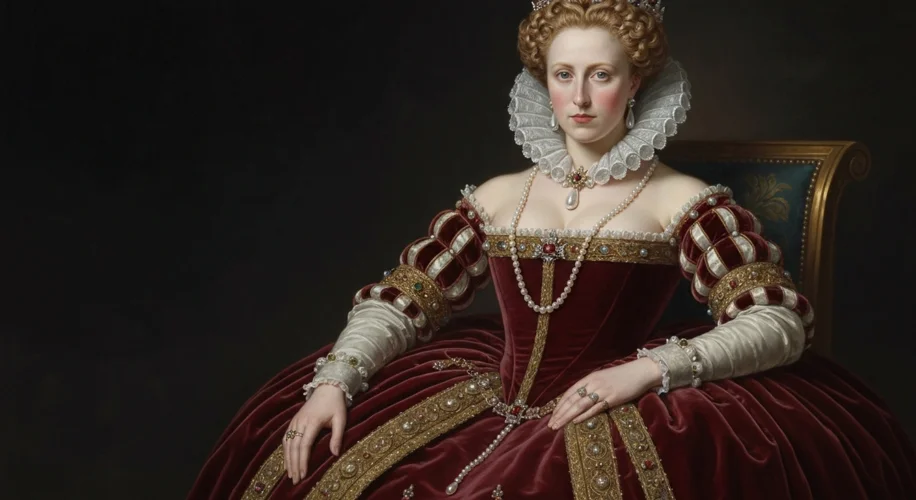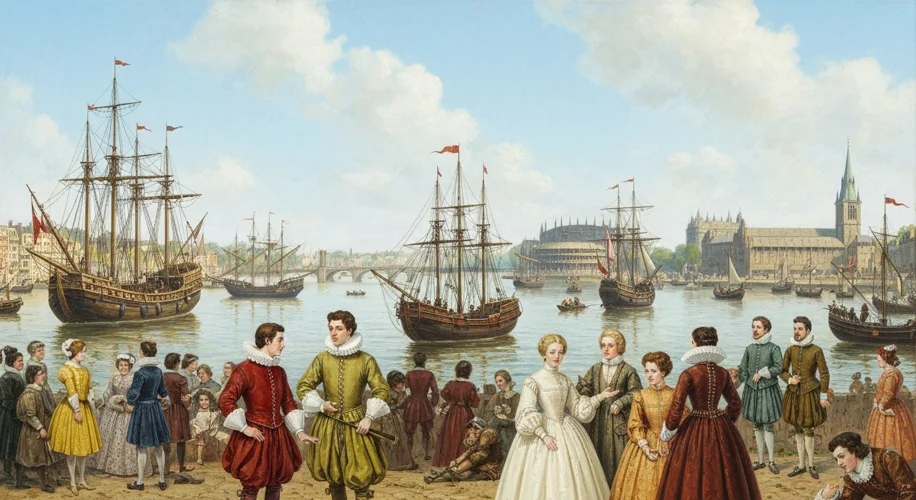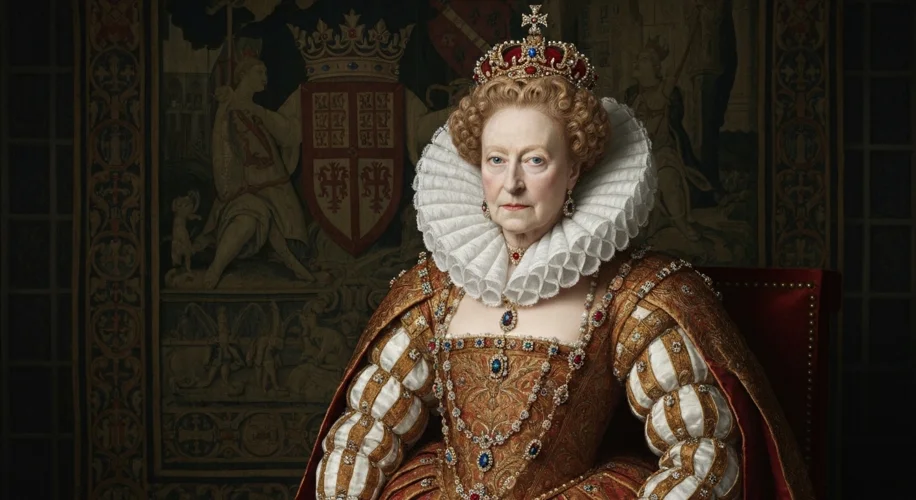The year is 1558. England, a nation fractured by religious turmoil and weakened by the machinations of foreign powers, stands at a precipice. On the throne sits a young woman, barely into her mid-twenties, untested and with a legitimacy questioned by many. This was Elizabeth I, a queen who would not only navigate the treacherous waters of her time but steer England toward an era of unprecedented glory – the Elizabethan Golden Age.
Born in 1533, Elizabeth’s early life was a masterclass in survival. Daughter of Henry VIII and Anne Boleyn, her very existence was tied to her father’s tumultuous break with Rome and his desperate quest for a male heir. Her mother’s execution when Elizabeth was just two years old, followed by her own declaration as illegitimate, cast a long shadow. She spent her formative years moving between residences, always under the watchful eyes of guardians, learning the art of caution and the value of a well-chosen word. The reigns of her half-brother, Edward VI, and half-sister, Mary I, were fraught with danger. Under Mary, a devout Catholic who sought to return England to the papal fold, Elizabeth, a Protestant, was imprisoned in the Tower of London, fearing for her life. This period of intense pressure forged her into a shrewd and resilient leader.

Upon ascending the throne in 1558, Elizabeth inherited a kingdom deeply divided. The Catholic North seethed under her Protestant rule, and France, allied with Scotland, posed a constant external threat. Her first great challenge was to establish religious stability. The Elizabethan Religious Settlement, a compromise between Protestant and Catholic practices, aimed to create a Church of England that most of her subjects could accept. It was a delicate balancing act, and for decades, Elizabeth walked a tightrope, suppressing radical factions from both sides while maintaining a facade of unity.
But Elizabeth was more than just a religious unifier. She was a master of political theatre and a patron of the arts. Her court became a vibrant hub of intellectual and creative energy. Playwrights like William Shakespeare and Christopher Marlowe flourished, their words capturing the spirit of the age. Explorers such as Sir Francis Drake and Sir Walter Raleigh ventured across the seas, expanding England’s reach and reputation. Poetry, music, and architecture all experienced a renaissance, contributing to a burgeoning sense of national identity. This was the ‘Golden Age,’ a period of cultural blossoming fueled by a sense of optimism and national pride, with the Queen herself at its radiant center.

However, this golden era was not without its dark clouds. The most formidable threat came from Spain, ruled by the devoutly Catholic Philip II. Philip, once married to Mary I of England, viewed Elizabeth as a heretic and an illegitimate usurper. He supported Catholic plots against her, most notably the Babington Plot, which aimed to assassinate Elizabeth and place her Catholic cousin, Mary, Queen of Scots, on the throne. The execution of Mary in 1587, a decision that weighed heavily on Elizabeth, removed a key rallying point for Catholic dissent but also infuriated Philip.
In 1588, Philip launched the Spanish Armada, an enormous fleet intended to invade England and restore Catholicism. The world watched with bated breath as the smaller, more agile English fleet, aided by fierce storms, engaged the Armada in a series of battles. The defeat of the Armada was a monumental victory for England. It not only secured Elizabeth’s reign and protected England from invasion but also signaled a shift in naval power in Europe, bolstering England’s confidence and its standing on the world stage.

Elizabeth reigned for over four decades, a remarkable feat in an era of short lifespans and constant political upheaval. She never married, earning her the moniker ‘The Virgin Queen.’ This was not merely a personal choice but a shrewd political strategy. By remaining unmarried, she avoided foreign entanglements and kept potential suitors and their nations in a perpetual state of hopeful anticipation, using the prospect of marriage as a diplomatic tool. Her unmarried status also allowed her to cultivate a unique image as being married to her kingdom, her people her children.
Elizabeth I’s legacy is profound. She transformed England from a religiously divided and vulnerable island nation into a confident global power. Her political acumen, her ability to inspire loyalty, and her patronage of the arts laid the groundwork for England’s future imperial and cultural dominance. The Elizabethan era remains a touchstone of English identity, a period remembered for its literary giants, its daring explorers, and the formidable queen who presided over it all with an iron will and an unmatched political genius. She was, in every sense, a sovereign who truly made her mark on history.

